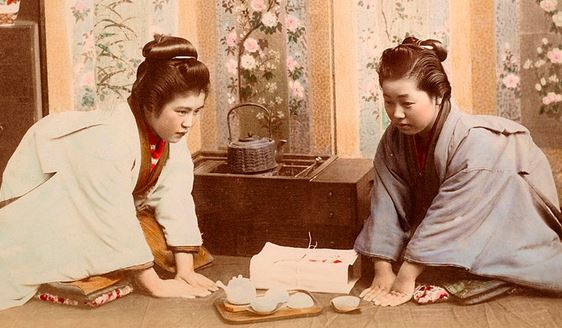Tea ceremonies | |

| |
Tea ceremonies hold a special place in various cultures around the world. Rooted in tradition and deeply influenced by the principles of mindfulness and tranquility, tea ceremonies offer a unique experience that goes beyond a simple cup of tea. In this article, we will embark on a journey to explore the enchanting world of tea ceremonies, delving into their rich history, cultural significance, and the profound impact they have on the mind, body, and spirit. The Essence of Tea CeremoniesTea ceremonies are more than just a way to prepare and consume tea. They embody a holistic experience that encompasses the art of tea preparation, the aesthetics of the tea room, and the connection between the participants. Each aspect is carefully orchestrated to create a sense of harmony, mindfulness, and appreciation for the present moment. A Brief History of Tea CeremoniesTea ceremonies have a long and fascinating history, originating in ancient China and spreading to various parts of the world. Let's explore some notable tea ceremony traditions: 1. Chinese Tea Ceremony (Gongfu Cha)The Chinese tea ceremony, known as Gongfu Cha, emphasizes the art of brewing tea with precision and attention to detail. It involves multiple infusions of tea leaves in small teapots, highlighting the flavors, aromas, and textures of the tea. 2. Japanese Tea Ceremony (Chanoyu)The Japanese tea ceremony, also known as Chanoyu or Sado, is a highly ritualistic and meditative practice. It embodies the principles of harmony, respect, purity, and tranquility. Matcha, a powdered green tea, is the centerpiece of the Japanese tea ceremony. 3. Korean Tea Ceremony (Darye)The Korean tea ceremony, known as Darye, places emphasis on simplicity and naturalness. It involves the preparation and sharing of traditional Korean tea, typically using loose tea leaves, and is characterized by a serene and contemplative atmosphere. 4. Moroccan Tea CeremonyThe Moroccan tea ceremony is a vibrant and social affair, reflecting the warm hospitality of Moroccan culture. It involves the preparation and serving of mint tea, traditionally poured from a teapot at a height to create a frothy texture. The Impact of Tea Ceremonies on Mind, Body, and SpiritTea ceremonies offer a multitude of benefits beyond the enjoyment of tea itself. Let's explore the impact of tea ceremonies on different aspects of our well-being: 1. Mindfulness and RelaxationTea ceremonies invite participants to slow down, be fully present in the moment, and cultivate a sense of mindfulness. The deliberate and unhurried preparation and consumption of tea help to create a serene and peaceful environment, allowing for relaxation and stress reduction. 2. Ritual and TraditionEngaging in a tea ceremony provides a connection to ancient traditions and cultural heritage. The rituals and etiquette associated with tea ceremonies help to instill a sense of reverence, appreciation, and respect for the tea, the process, and the participants involved. 3. Social ConnectionTea ceremonies often bring people together, fostering social connection, camaraderie, and the sharing of experiences. They provide an opportunity for meaningful conversations, deepening relationships, and creating lasting memories. 4. Sensory ExperienceTea ceremonies engage all the senses, from the aroma of the tea leaves to the delicate flavors on the palate. The visual aesthetics of the tea room, the sound of the pouring water, and the texture of the tea cups enhance the overall sensory experience, making it a feast for the senses. Frequently Asked Questions (FAQs)Let's address some common questions related to tea ceremonies:
ConclusionTea ceremonies offer a profound and enchanting journey into the world of tea, tradition, and mindfulness. Whether you engage in a Chinese tea ceremony, a Japanese tea ceremony, or explore other cultural tea ceremony traditions, the experience is sure to leave a lasting impact on your mind, body, and spirit. Through the rituals, aesthetics, and connections fostered in tea ceremonies, we find a gateway to tranquility, social connection, and cultural appreciation. So, take a moment to savor a cup of tea, immerse yourself in the beauty of a tea ceremony, and let it transport you to a realm of serenity and harmony. | |
| Views: 196 | | |
| Total comments: 0 | |